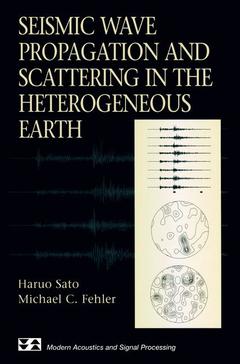Description
Seismic Wave Propagation and Scattering in the Heterogeneous Earth, Softcover reprint of the original 1st ed. 1998
Modern Acoustics and Signal Processing Series
Authors: Sato Haruo, Fehler Michael C.
Language: English
Subjects for Seismic Wave Propagation and Scattering in the...:
Approximative price 52.74 €
In Print (Delivery period: 15 days).
Add to cartPublication date: 07-2012
308 p. · 15.5x23.5 cm · Paperback
Approximative price 90.90 €
In Print (Delivery period: 15 days).
Add to cartPublication date: 04-2011
320 p. · 16x24 cm · Hardback
Description
/li>Contents
/li>Comment
/li>
Seismic waves, both natural and man-made, reveal much information about the Earths interior, and recent advances expose the limitations of classical theory and analysis.
It reflects the growing realization that the Earths crust contains many irregular components that transmit seismic waves in diverse ways, yet that these irregularities can be detected using advanced analytical methods.
Comprehensive survey of the latest developments in seismic wave propagation and analysis and the first coherent introduction to the theory of scattering.
Focuses on recent developments in the area of seismic wave propagation and scattering through the randomly heterogeneous structure of the Earth, with emphasis on the lithosphere.
Includes discussions and analyses of observations using the latest theoretical methods, assisting the reader to see the practical use of the methods for characterizing the Earth.
Successfully integrates information from different sources to provide a thorough discussion.




